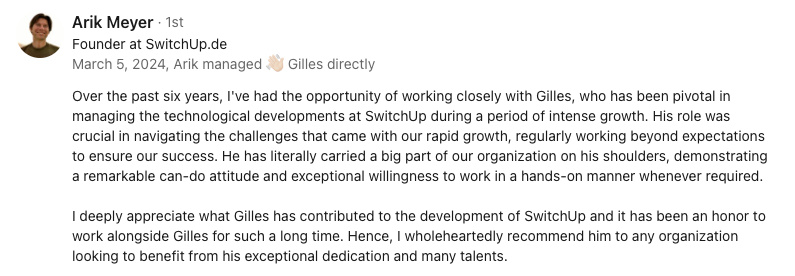Abstract:
High-Performance Computing (HPC) plays a crucial role in advancing green technology by enhancing the efficiency of renewable energy systems and improving climate models through complex simulations and large datasets. HPC optimizes wind farm layouts, supports grid stability, and advances climate models to provide detailed atmospheric insights, aiding resource management and risk assessment. European startups like Vortex Bladeless, Iceotope, Qarnot Computing, and NEOEN leverage HPC for innovations in wind energy, data center cooling, waste heat utilization, and clean energy project optimization. The design of sustainable HPC systems, focusing on energy-efficient hardware and software, innovative cooling techniques, and renewable energy integration, is essential for minimizing environmental impacts. Although HPC adoption presents challenges, cloud-based services and funding initiatives like Horizon Europe offer scalable solutions for startups. Future trends in HPC include adaptive algorithms and ARM-based processors, supported by regulatory developments under the European Green Deal, promoting energy efficiency and sustainability in greentech.
The role of High-Performance Computing (HPC) in green technology is impressive. It helps tackle climate change and improves energy efficiency. HPC handles complex simulations and huge datasets, making renewable energy systems better and giving us a clearer picture of our environment. It optimizes wind farms and predicts climate changes with great accuracy, leading to significant advances in green technology. For European startup tech executives, HPC offers a powerful tool to enhance their greentech initiatives, addressing challenges such as limited resources and the need for scalable solutions.
The power of high-performance computing in greentech
HPC is crucial for developing green technologies. It enhances the efficiency of renewable energy systems and refines environmental models. By leveraging HPC's capabilities for complex simulations, the greentech industry can create more reliable sustainable energy solutions and improve climate change predictions.
Renewable energy optimization
Boosting efficiency in renewable systems
HPC runs detailed simulations of solar and wind systems, significantly improving their design and efficiency. These simulations allow energy companies to test various configurations, ensuring optimal use of renewable resources. Projects like PRACE and Horizon 2020 utilize these simulations to enhance solar panels and wind turbines, creating effective and affordable energy solutions.
Optimizing wind farm layouts
With HPC, advanced airflow simulations optimize wind farm layouts, increasing energy output. Computational models analyze wind patterns, helping turbines be placed strategically to maximize energy capture. This improves energy production and reduces costs, making wind energy more viable.
Ensuring grid stability and efficiency
HPC is essential for integrating renewable energy into power grids, ensuring stability and efficiency. It analyzes large datasets to manage the variability of renewable resources, maintaining a balanced and reliable power supply. Research from the University of Edinburgh demonstrates how HPC can predict and adapt to changes in energy demand, supporting a stable and sustainable energy grid.
Environmental modeling and climate change
Advancing climate models
HPC advances climate models by running complex simulations with vast datasets. A study in Nature Climate Change highlights how these models enhance our understanding of climate impacts, providing valuable insights for policymakers.
High-resolution atmospheric and oceanic process representation
HPC supports high-resolution climate models, capturing detailed atmospheric and oceanic processes. These models improve predictive accuracy and resource management, as emphasized by the National Academies of Sciences.
Supporting resource management and risk assessment
HPC aids in resource management and risk assessment by simulating climate scenarios. Insights from Environmental Modelling & Software show that HPC helps optimize resources like water and agriculture, preparing communities for environmental challenges.
European startups harnessing HPC for greentech
Vortex Bladeless: revolutionizing wind energy
Vortex Bladeless, a Spanish startup, uses HPC for aerodynamic simulations to improve bladeless wind turbines. This innovation boosts efficiency and addresses issues like noise pollution.
Iceotope: redefining data center cooling
UK-based Iceotope uses HPC to design liquid cooling systems for data centers, cutting energy use and supporting sustainability goals.
Qarnot Computing: sustainable heat utilization
Qarnot Computing in France uses HPC for environmental modeling and repurposes waste heat to warm buildings, enhancing energy efficiency.
NEOEN: enhancing clean energy projects
NEOEN in France uses HPC to optimize solar and wind projects, ensuring better energy yield and grid integration.
Unique Example
Another innovative startup, Greenlytics, employs HPC to develop predictive models that optimize energy consumption patterns, showcasing a unique approach to harnessing HPC in greentech.
Designing sustainable HPC systems
The architecture of HPC systems is important for sustainability. As energy demands grow, the focus is on creating energy-efficient systems that minimize environmental impact.
Energy-efficient hardware and software
Choosing smart hardware: Selecting energy-efficient servers and processors is crucial. The EU's Code of Conduct emphasizes balancing performance with energy use, utilizing features like advanced power management.
Smart software for smart systems: Software optimization is key to reducing energy use. Efficient algorithms and software lower HPC system energy demands, as demonstrated by systems on the Green500 list.
Cooling solutions and renewable integration
Innovative cooling techniques: Cooling is vital for HPC efficiency. Liquid cooling and ambient air use reduce energy needs, as highlighted in ASHRAE guidelines.
Integrating renewable sources: Using renewable energy in HPC operations reduces carbon emissions. The Partnership for Advanced Computing in Europe advocates for solar and wind integration.
Navigating challenges and opportunities in HPC adoption
Adopting HPC for sustainability in Europe presents challenges but also offers growth opportunities. Startups can manage limited resources and balance scalability with speed by exploring cloud-based HPC services, which offer scalable solutions, reducing upfront costs and providing access to advanced technology.
Funding and partnerships
Funding from programs like Horizon Europe and the EuroHPC Joint Undertaking is crucial. These initiatives help startups develop innovative solutions aligned with sustainability goals.
Future trends and innovations
HPC is evolving, bringing new trends and innovations to improve energy efficiency and sustainability in greentech.
Emerging technologies
Advancements like adaptive algorithms and ARM-based processors reduce HPC system energy needs, providing promising prospects for sustainable infrastructures.
Regulatory developments
The European Green Deal and EU Taxonomy Regulation support sustainable HPC adoption. Guidelines for data center sustainability promote efficient resource use, setting a strong foundation for environmentally friendly operations.
Personal Reflection
Reflecting on my experience in the tech industry, I've seen firsthand how HPC's rapid advancements can drive innovation in greentech. The potential for startups to leverage these technologies is immense, offering exciting opportunities to shape a more sustainable future.
You might be interested by these articles:
- Maximizing Performance with Quantum Computing Architectures
- Supercomputing Innovations
- Elevating Compute Power with HPC





